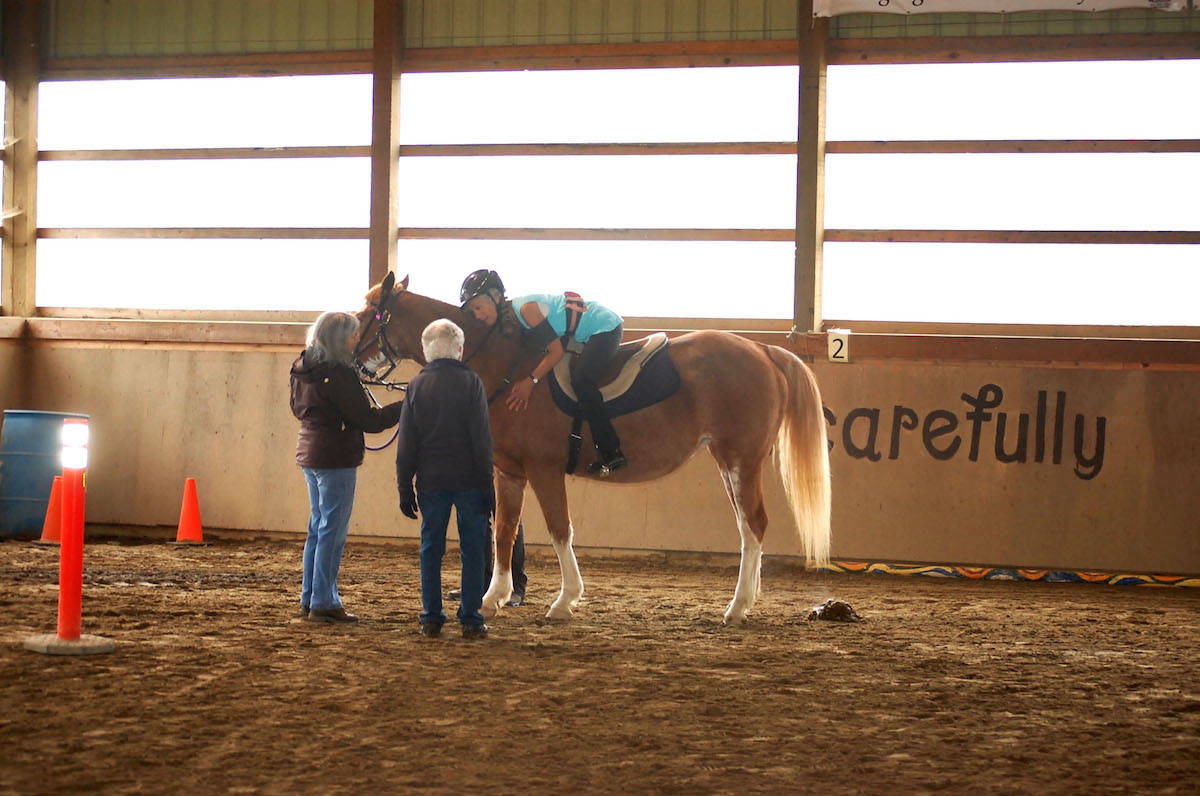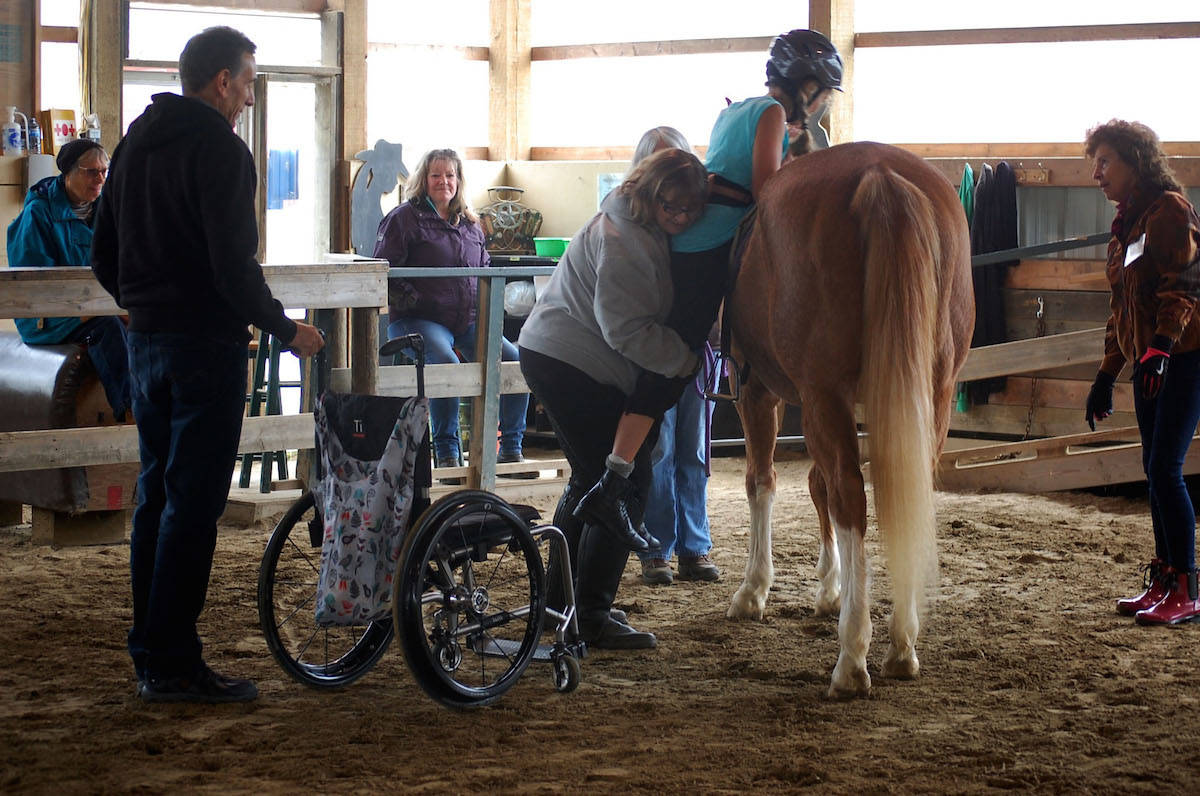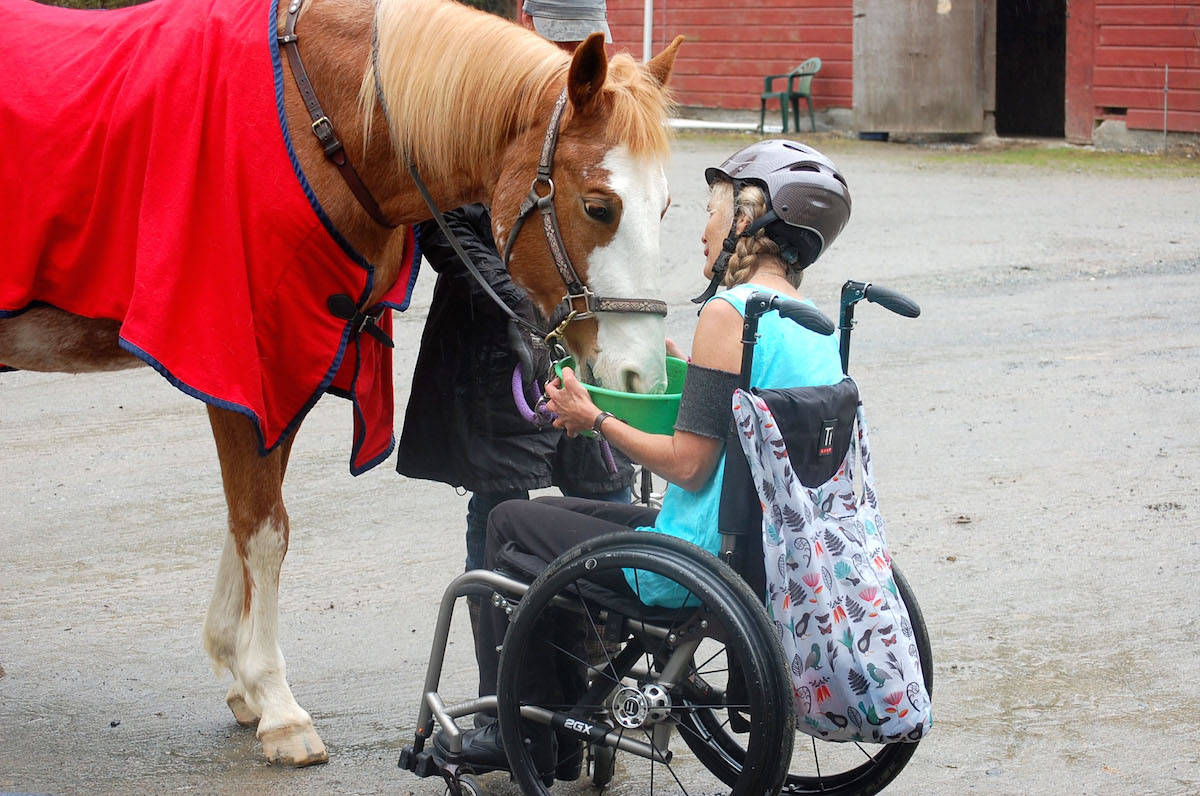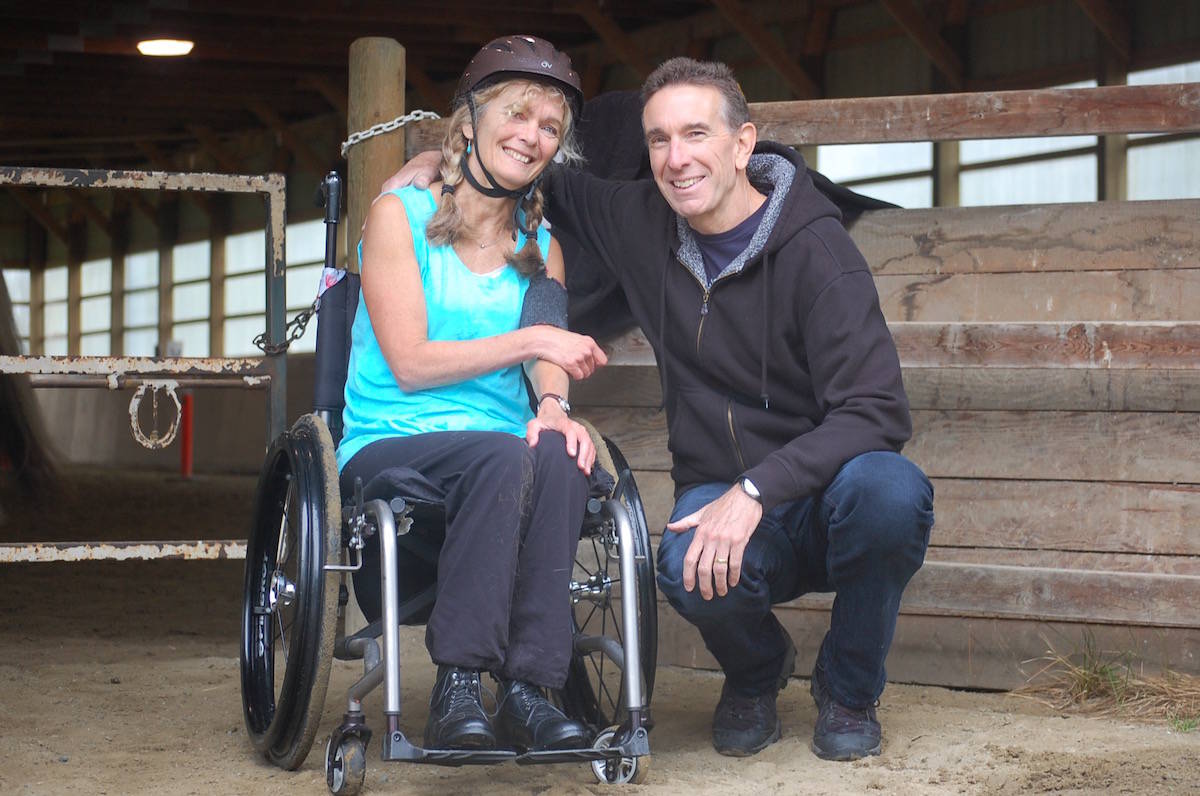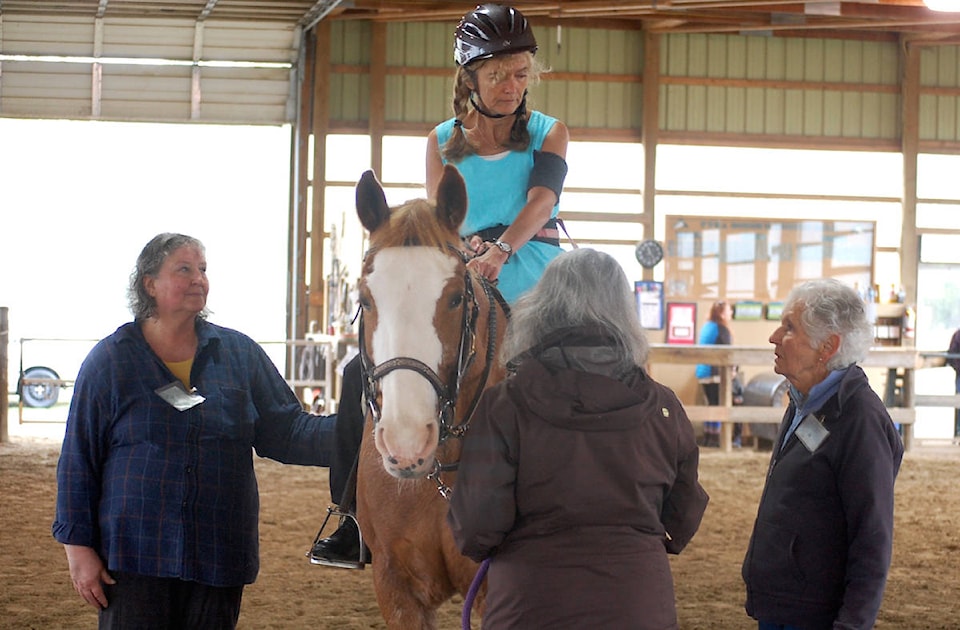A 57-year-old woman, bound to her wheelchair from multiple sclerosis, has found relief through riding with Aldergrove’s Valley Therapeutic Equestrian Association (VTEA) for the past two years.
Carol Still was diagnosed with multiple sclerosis (MS) 24 years ago.
Just two weeks ago, Still – a Walnut Grove resident – was hospitalized from a serious symptom flare-up.
“I had 18 years where nobody knew I has MS – I hiked, biked, snowboarded, kayaked, I did everything,” Still said, “I was active and able.”
But five years ago, Still went from walking with a cane to suddenly needing a wheelchair to get around – from remitting relapse to a secondary progressive state of MS, with nearly constant lower limb muscle spasticity.
“I wasn’t able to do things the same,” Still elaborated. “I had no core muscles, leg muscles, and very little balance before I started riding therapeutically.”
It was initially a doctor at her neurologist’s office that recommended therapeutic horseback riding, or hippotherapy, in place of the physical therapy she did on a daily basis, indoors.
“My family also encouraged me by saying ‘you’re life is not just physiotherapy’,” Still said.
The first time she rode at VTEA, it took five helpers to get her from her wheelchair to a mounted position.
“I was terrified,” Still recounted.
Now she rides most Thursdays, for a half-hour, on the 20-acre property on the 3300-block of 256th Street.
Volunteers perform what is called a “thigh-hold” while she rides, acting as her muscles. Stirrups further secure the place of her legs as she trains.
Her instructor, Donna Pellerin, has been teaching with the non-profit for nearly six years but has worked in therapeutic riding for 35 years.
Pellarin reminds Still to “direct [her] hips in the direction [she] wants to go” as her and her horse, Rose, weave in and out of cones in the arena, challenging her at times.
READ MORE: Injured nurse back in the saddle after horse riding accident
“The first time I trotted it was so beautiful – the freedom that I felt. I started bawling. Then the volunteers all began to cry,” Still said, “from the person who took five people to get on a horse to a year and a half later trotting.”
The effects of her sessions at VTEA are undeniable.
“For me, I get a lot of leg spasms. But because of riding, today I will not get spasms or have very few today and tomorrow,” Still explained.
“It also really helps my balance,” she added.
Hippotherapy activates more than 1,000 to 5,000 muscles that Still doesn’t normally use, her physiotherapist told her.
Not to mention, the joy it brings her heart.
Though it’s not always easy, especially as most VTEA riders battle long-lasting diseases affecting their brain.
“Carol has just gone through a really bad time in hospital due to a flare-up. So, right now, what we’re trying to do while she’s on the horse is to strengthen her core,” said Pellerin.
“I’ve noticed that when she’s up there – she’s free,” instructor Pellerin added, “she’s not in her chair. We’re positive the weakness is going to improve as the weeks go on and she keeps riding.”
Still’s periodically wraps her arms around Rosie’s neck and rests her body wholly on the horse.
“I love being near a horse – I love the smell of them, the beauty of them,” Still described.
She remembers a time when after bonding with her previous horse, Nickers, the animal refused to leave her side after an assisted ground dismount, that is, until she had a hand on her wheelchair.
“He was a pretty easy going horse but he would not move until I pet him with one hand and had the other on the back of my wheelchair,” Still said.
After her second week riding on Rosie, Still greeted the tacked-up horse after their session with an apple in a bucket on her lap.
“We’re working on our relationship,” Still remarked giddily about the weekly treat. She pet and held the horse’s head in her arms, and gave a few kisses, while the horse finished her snack.
“These horses have to carry unbalanced weight from most of the riders. It’s a really hard job for them,” trainer Pellerin explained.
Another instructor, Kim Yawney, has also been witness to the benefit of hippotherapy for those at VTEA.
All of the non-profit’s instructors are certified by the Canadian Therapeutic Riding Association.
“A horse’s gait or walk is the closest thing to simulate us as humans walking. So anyone who is in a wheelchair or has any leg or muscle issues, it lets them use those muscles again due to their proximity to the horse,” Yawney elaborated.
She explains that Still rides on a super core – a bareback-simulating saddle with honeycomb padding on it.
RELATED: Therapeutic riders thank supporters
“The rider feels the warmth of the horse and movement of their muscles with this saddle,” Yawney said.
On warmer days, riders like Still will travel the trails atop her horse, work her abdominal muscles with the incline of the centre’s hills, and even enjoy berries along the way.
“Some of my side-walkers pick berries for me on the trails because they know I enjoy them so much,” she said.
Volunteers with VTEA work as side-walkers and oftentimes emotional support, under the instruction of trainers and alongside therapeutic-grade horses. All are 14 or older, and undergo lessons to be able to assist appropriately during therapy sessions.
Some of the organization’s youngest riders are only three years of age and all are those with physical limitations that include: having suffered a stroke, having been diagnosed with cerebral palsy, MS, autism and adults with traumatic brain injury.
“Most of our children who ride here are primarily those with autism,” said Pellerin.
“The people here are amazing – it’s hard for me to get around the fact that these people come from Mission, Chilliwack, White Rock, Langley – all over the place to come and volunteer – for me.” Still said. “They are my people.”
VTEA depends on volunteers, as they only charge $34 for a half-hour lesson, which barely stretches to meet a third of the centre’s operating costs.
“Without volunteers we can’t run,” Yawney interjected, “So we are always an the lookout for them.”
To get involved at VTEA, by donating money or time, people can visit www.vtea.ca or call 604-857-1267.
